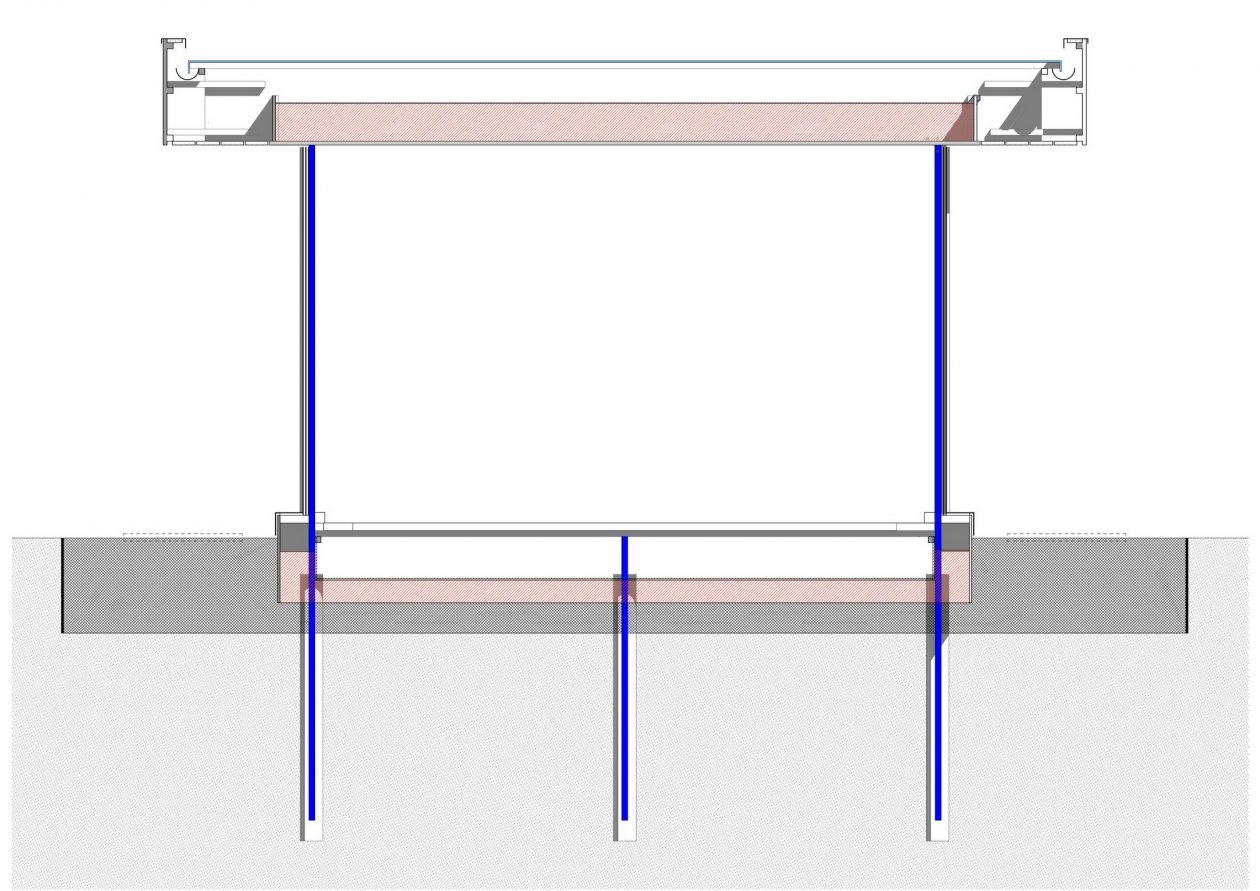Check out a few methods to prepare the foundations for the house.
Look how easy, cheap and fast solution it is. Be it on a small or on at a grand scale.
On the video we still don’t have the concrete part poured. And I left the whole frame hang in the air / flying so we can understand it better. Notice the metal beams for the floor are already inserted.
Note that the house on the video is floating 7 inch or 2meters above the ground in reality it’s not like that. I just wanted to show that at this stage the concrete it’s absolutely missing from the foundations.
I am reformulating the phrase. All the metal you see now it’s not in contact with concrete. First you fix the metal part of the foundations that’s in the same time is the façade and the windows frame as well. Sure I kind of simplified things here … but for showing an idea is great. Just joking. I didn’t simplified the drawing. I mean it 🙂 However again and again … you need local engineer !!!
That way we can build with literally surgical precision. The acrylic sheets for the windows will fit perfect. We have days and days even weeks to measure things level them at mm precision.
At this stage we still have things in the “air”. We have the circular holes dug … however no concrete poured yet. Just the empty circular holes in the ground. (Sitting on temporary wooden frames or any other improvisation 🙂
It needs to be leveled in the exact position

That procedure shouldn’t take longer than half a day. And should be done immediately after or meanwhile the holes for the foundations are dug. Best case. This way the holes don’t have time to collapse. (it will be filled with concrete within a few hours).
The metal bars “in the air” are fixed till their position is perfect.

Note that at the upper part won’t have a metal bar to avoid dew point.
Inserted the SAME video again. Check the metal bars in the air.
So for now (till its leveled / concrete hardens ) we can “borrow” a metal bar to guide our façade in a line.(at the ceiling level). We can use ropes, metal cables or even duct tape to get them in a perfect position. Needs to be verified by a laser till it’s perfect. Thin metal cables / screw system and wooden triangles should work out quite well to position all of the components in a perfect position.
Notice all of the metal parts are the same size. !!!
The horizontal beams will hold the wooden floor.
Why do we engineer it this way? BUYING BULK IS CHEAPER. IF WE HAVE 1000 DIFFERENT PIECES AND SHAPES AND FORMS THAT’S COMPLICATION & HUSTLE.
Lots of spare parts and thinking. More transportation. In case of an error: it means another and another ride back to the shop delays and overlaps. Workers work slower. They steal more. 🙂 It’s easier to mess it up.
In this way : after a program calculates the materials needed. YOU WILL REMAIN WITH ALMOST NO MATERIALS IN PLUS. The most efficient way to build.
The height of the building is almost none … therefore the forces of the wind are almost “absent”. This really dense … and really thin metal structure will do its job quite well. A similar strong and flexible design could handle earthquakes or the infamous tornado alley winds.
Cross sections.
Didn’t know where to fit this information. At bigger homes … or this ones as well. The engineer should place some X … cross sections to stabilize the building even better. And my point here. They shouldn’t be metal bars but thin metal cables. Right in the window frame. (cluster). If it’s a must. Depends on the design.
It’s extremely strong / cheap … and it doesn’t bother that much blocking the visibility. (in case of a huge glazing). It’s a good compromise especially at the corners at the building. Where engineers insist with the x shape reinforcement.
Earthquakes or hurricanes “can’t” grip on it. At least this will be the last house standing for sure. The design is really low. Strong like titanium and flexible meanwhile. It has no mass that an earthquake can work with. Sure in case of an earthquake area the design needs to be modified a bit at foundations level. The framework itself its basically the same.
As an insight.
Not the static weight of a building makes us buy lots of construction materials to reinforce the frames. The wind makes us spend. Imagine putting a Boeing 747 plane on a bridge, or pulling it with a half inch rope. Or a sailboat.
The lower we stay … to smaller the winds momentum gets.
M=F*L
Momentum = Force * length. The lower the building (L in ouir case) the Momentum of the wind is smaller. We can get away with not buying construction materials.
Sure that’s not for the center of a capital where land costs like gold. However in the countryside it’s cheaper to buy more land (within this context) than to build another level or adding a steep rooftop.
Let’s put it in another way. I would rather build 4 houses like this (I refer to height height) than a 3 story house. It will be cheaper. I could lend it out for more money. Direct access to barbeque area and pools.
Is that an universal truth in case of every 1 story vs 2,3 story houses. At all !!!. But it’s true in our case. The only thing we need to know. So with a price of a house you can build an apartment complex. Even banks evaluate that for more. They don’t care how you built it. They just see there are premium apartments with extreme durability and such on a bigger land. (than squeezing it)










